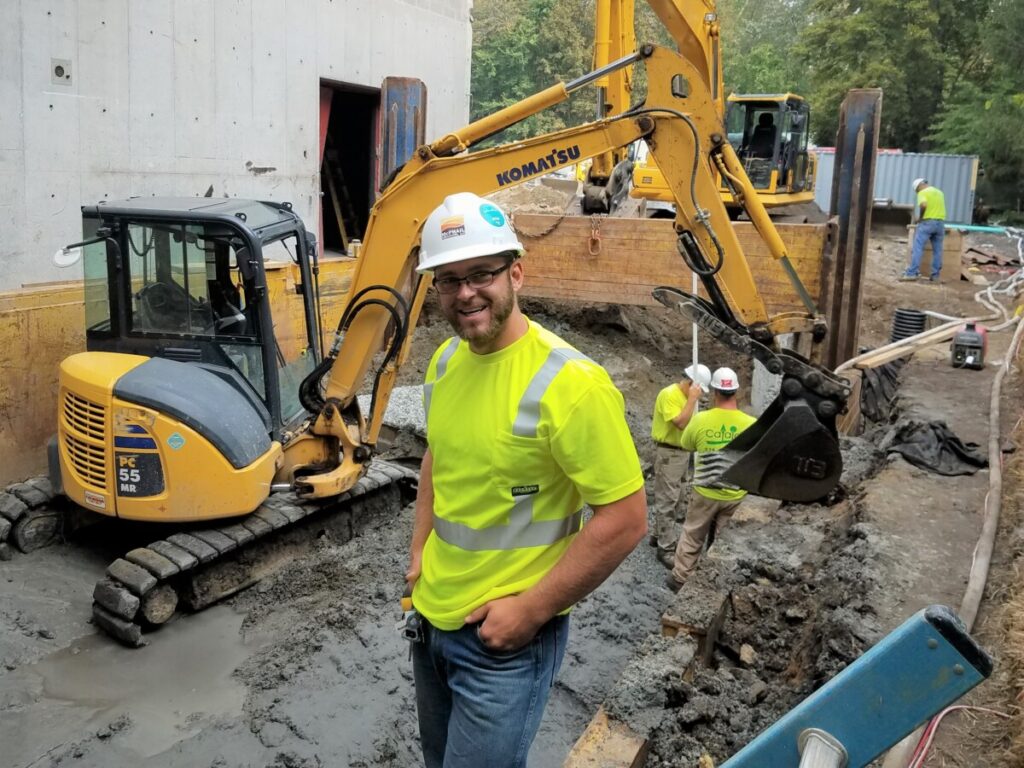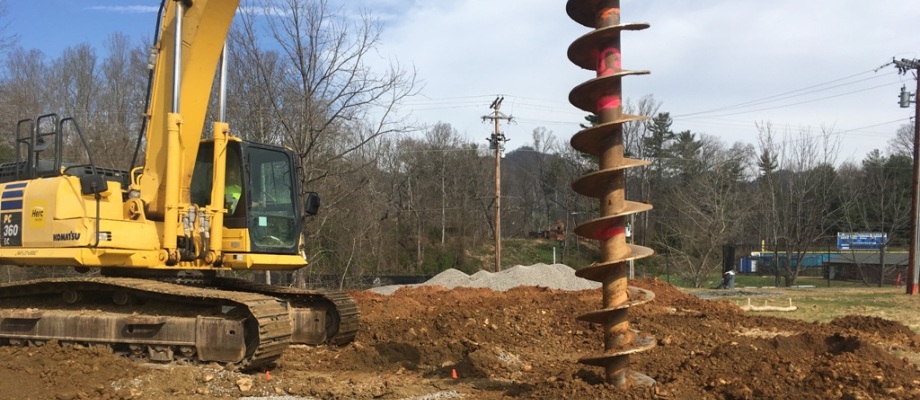The Advancement of Civil Consulting Engineers in the Modern Period
Wiki Article
A Thorough Appearance at the Range of Method for Geotechnical Designers and Their Impact on Task Usefulness and Danger Reduction
The scope of method for geotechnical designers encompasses a variety of critical obligations that directly affect project usefulness and danger management. From carrying out thorough website examinations to examining subsurface problems, their expertise is vital fit foundation layout and construction methods. As tasks progressively run into complex geological difficulties, understanding the nuanced role of these specialists becomes crucial for making sure successful results. Nevertheless, the ramifications of their work prolong past simple analysis; they can substantially alter the trajectory of a project. What specific strategies do geotechnical designers utilize to browse these intricacies properly?Functions and Obligations of Geotechnical Engineers
Geotechnical designers play a vital role in the structure of building tasks, guaranteeing that frameworks are improved solid ground. Their responsibilities include a series of activities crucial for assessing soil and rock properties, which straight influence project expediency and safety and security. Geotechnical designers conduct site examinations to collect critical information relating to subsurface problems. This includes exploration boreholes, tasting dirt and rock, and performing in-situ tests to establish material attributes.
Cooperation is also a vital facet of their function; they work carefully with civil engineers, designers, and environmental specialists to make certain that geotechnical factors to consider are integrated into general project preparation. Ultimately, the competence of geotechnical engineers is crucial in advertising the safety, sustainability, and feasibility of building undertakings.
Key Areas of Geotechnical Evaluation
Dirt samples and geological studies are fundamental components in the crucial areas of geotechnical evaluation. These activities offer important data regarding the physical and chemical buildings of the subsurface products, enabling designers to evaluate website conditions properly. The evaluation typically includes soil classification, compaction, shear strength, and permeability, all of which are important for understanding the behavior of dirts under different loading conditions.Another significant area of focus is incline stability evaluation, which evaluates the risk of landslides or soil erosion. This entails evaluating the geometry of slopes, dirt types, and groundwater problems. Site characterization is likewise important, as it entails a detailed investigation of the website's background, consisting of previous building and construction, contamination, and natural dangers.
Additionally, groundwater evaluation plays a vital role in geotechnical evaluation, influencing both the design and building phases. Recognizing the groundwater table, circulation direction, and possible variations is necessary for effective structure layout and stormwater management.
With each other, these vital locations of geotechnical analysis create a detailed framework that notifies decision-making processes, making certain sustainable and risk-free design practices while decreasing potential risks associated with subsurface conditions.
Influence On Job Expediency
The feasibility of a construction project pivots considerably on the understandings obtained from geotechnical examinations. These investigations offer necessary information concerning dirt residential properties, groundwater problems, and subsurface attributes, which are critical for establishing the suitability of a site for building and construction. By assessing elements such as dirt bearing capacity, settlement possibility, and slope security, geotechnical designers play a crucial role in evaluating whether a task can continue as intended or if alterations are required.In addition, the results of geotechnical researches straight affect job design and construction techniques. Exact geotechnical data enables informed decision-making, making certain that architectural styles fit site-specific conditions and adhere to governing demands. This process assists in optimizing source allotment, thereby lowering unanticipated hold-ups and price overruns.
Furthermore, a complete geotechnical analysis improves the total stability of a job by determining possible obstacles early in the planning stage. By addressing these obstacles proactively, stakeholders can improve the task's possibility of success, making sure that it satisfies both monetary and useful purposes. In recap, the contributions of geotechnical engineers are integral to developing task usefulness, therefore laying the groundwork for reliable task execution.
Threat Mitigation Approaches
While building tasks naturally involve various uncertainties, applying effective danger mitigation techniques can significantly minimize prospective problems arising from geotechnical factors. Geotechnical engineers play an essential duty in determining, analyzing, and dealing with risks connected with subsurface problems, ensuring that tasks continue efficiently and continue to be within budget.One main approach involves detailed site investigations, that include dirt sampling, in-situ screening, and lab evaluation. These evaluations offer crucial data on soil toughness, habits, and structure, enabling engineers to develop foundations and earthworks that are both safe and efficient. Additionally, utilizing sophisticated modeling techniques, such as finite component evaluation, permits designers to predict how soil and structural interactions may develop under different loading conditions.
One more reliable mitigation approach is the application geo tech engineering of ideal style adjustments, such as making use of reinforcement strategies or adopting alternate construction approaches, which can boost stability and lower susceptability to geotechnical issues. In addition, constant surveillance of site problems during building and construction can facilitate prompt treatments, therefore lessening the possibility of unforeseen issues.
Study and Real-World Applications
Study supply valuable insights into the practical applications of geotechnical engineering principles and highlight the efficiency of risk mitigation strategies in real-world circumstances. One notable example is the construction of the Millennium Dome in London, where innovative ground treatment techniques were executed to resolve tough dirt conditions. By employing deep concrete mixing and soil stabilization techniques, designers successfully produced a stable foundation that alleviated possible settlement dangers, guaranteeing the task's usefulness.One more situation is the stabilization of the hill for the new freeway in The golden state, where extensive incline analysis and monitoring were utilized. Geotechnical designers utilized maintaining wall surfaces and water drainage systems to take care of groundwater, significantly reducing the threat of landslides. This proactive technique not just protected the integrity of the highway yet additionally improved public security.
In addition, the development of a significant airport incurable showed the value of comprehensive website examinations. civil consulting engineers. Geotechnical engineers determined troublesome dirt layers and suggested specific foundation designs, bring about an effective project conclusion with decreased delays. These study underscore the vital role that geotechnical designers play in evaluating threats and executing reliable options, therefore enhancing project usefulness and general success
Verdict

By assessing variables such as dirt bearing ability, negotiation possibility, and incline security, geotechnical engineers play a crucial role in assessing whether a task can proceed as intended or if adjustments are required.
In summary, the payments of geotechnical engineers are integral to establishing project usefulness, thus laying the groundwork for reliable project execution.
Geotechnical engineers determined troublesome soil layers and recommended details foundation designs, leading to an effective job conclusion with reduced delays. geo tech engineering. These instance researches emphasize the essential duty that geotechnical engineers play in evaluating dangers and executing efficient solutions, thereby boosting project usefulness and general success
With effective threat reduction strategies and the application of innovative modeling methods, geotechnical engineers boost job outcomes and decrease hazards related to dirt and groundwater problems.
Report this wiki page